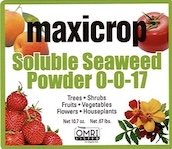Organic Fertilizer Primer
Author Ellen Vande Visse
Organic Fertilizer Primer
A quick reference
My gratitude to you on your commitment to nurture living soil! By choosing organic fertilizers, you feed your microbe armies, and then they cycle those nutrients. You are putting the parts of the program together for healthy soil, healthy veggies, healthy you! Hurrah!
The Basics: I highly recommend that you get a soil test to determine what your particular soil actually needs. Find my recommended soil labs on this website, “Soil Test Services”.
The company will recommend applications of organic amendments like blood meal, fish meal, cottonseed meal, bone meal, potassium sulfate. Carefully follow the recommended rate of application so you do not over-apply or under-apply.
No soil test or recommendation? Here’s my easy and simple solution. If you do no other fertilizing, give everything in your yard or garden a spring application of compost and then regular bi-weekly applications of liquid fish (either fish emulsion or fish hydrolysate). Liquid fish provides NPK, plus secondary macro and micro elements and trace minerals. It is very microbe-enhancing. Better yet, mix in Maxicrop into your liquid fish solution each time you apply. (See FISH THE FLATS)
Follow the directions on the label. Don’t overdo– too much is as harmful as too little. Apply as a spray and a drench by simply holding your watering can of solution high over the plants. Keep applying every 10 to 14 days until about Sept 1st.
What’s the difference in liquid fish?
Fish emulsion is the familiar white plastic jug of stinky liquid. A typical brand is Alaska Fish Fertilizer 5-1-1. Read the numbers when you shop—some liquid fish is a 2-2-0.3. It is processed with heat and preserved with chlorine (not beneficial to soil microbes). Use the 5-1-1 for vegetables. Use MorBloom 0-10-10 for flowers.
Fish hydrolysate is cold-pressed, enzymatically digested. It is preserved with an acid such as vinegar. This form is more beneficial to your soil food web. Again read the numbers of NPK. Follow jug directions for dilution and application rates exactly. Don’t over- do. You can put liquid fish into your watering can or into a sprayer. Apply to foliage (foliar) and root zone (drench). This is a high-nitrogen boost especially for heavy-nitrogen feeder vegetables: your greens, lettuces, and cabbage family.
Store left-overs inside a container that is safe from mice, squirrels, dogs, and cats!
Kelp Powder, soluble = Maxicrop
From Good Earth Garden School.com store
Comes in a Ziploc bag with directions.
Kelp provides potassium, bountious trace elements, and growth stimulants. It reduces transplant shock and hurries seed sprouting.
Kelp powder dissolves very well in water—esp. if you pre-mix it in a separate small container of water. Follow the dilution and application rates on the package. Apply with your watering can or sprayer to foliage and/or root zone. Apply 2-4 times per season or as often as every 10 days. Again, a soil test would help you know what your soil and crops actually need.
Combine Fertilizers with Compost Tea?
Yes, yes, yes, these are the foods to feed your beneficial microbes and maintain their high numbers. Can you mix the kelp or fish powder right into the same watering can (or plastic garbage can) as the compost tea? Yes BUT—
Yes, it’s great to apply them at the same time. You save time, so it’s very efficient.
BUT do not combine them and then leave them sitting for more than an hour or two. You see, the actively aerated compost tea will go anaerobic (because of the heavy dose of food and used up oxygen) and could be harmful to your plants. Augh!
Other choices, such as Microbial Inoculant(s)
In addition to a fertilizer, you can apply vital and highly beneficial microbes to your soil. Beneficial microbes are necessary members of a healthy soil food web. They include bacteria, fungi, protozoans, and nematodes. Examples: worm tea, compost tea, Soil ReVive, Myco-Apply, and others. The purpose? Microbes are essential to deliver plant nutrients, out-compete disease microbes, stimulate vigor and earlier maturity, and increase yield. Contents of these inoculants may include endo-mycorrhizal fungi, plant proteins, animal proteins, vitamins, minerals, amino acids, trace elements, specialized, pre-selected, adapted soil microbes, bio-organic catalysts and microbial growth stimulants.


